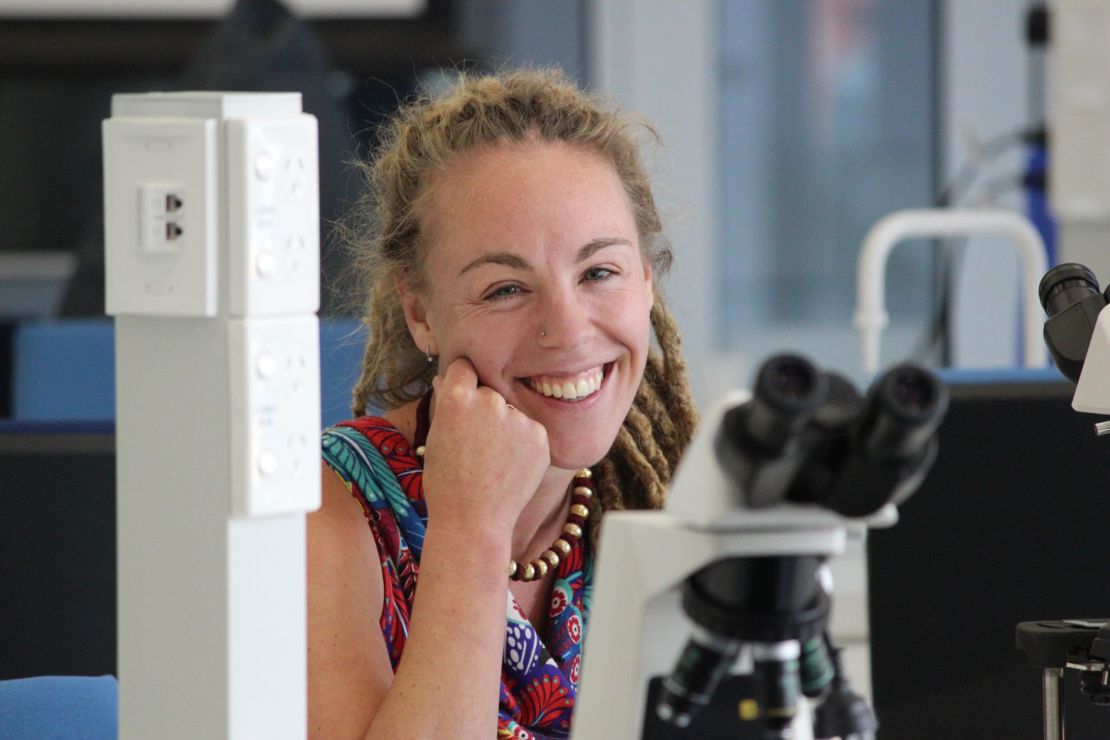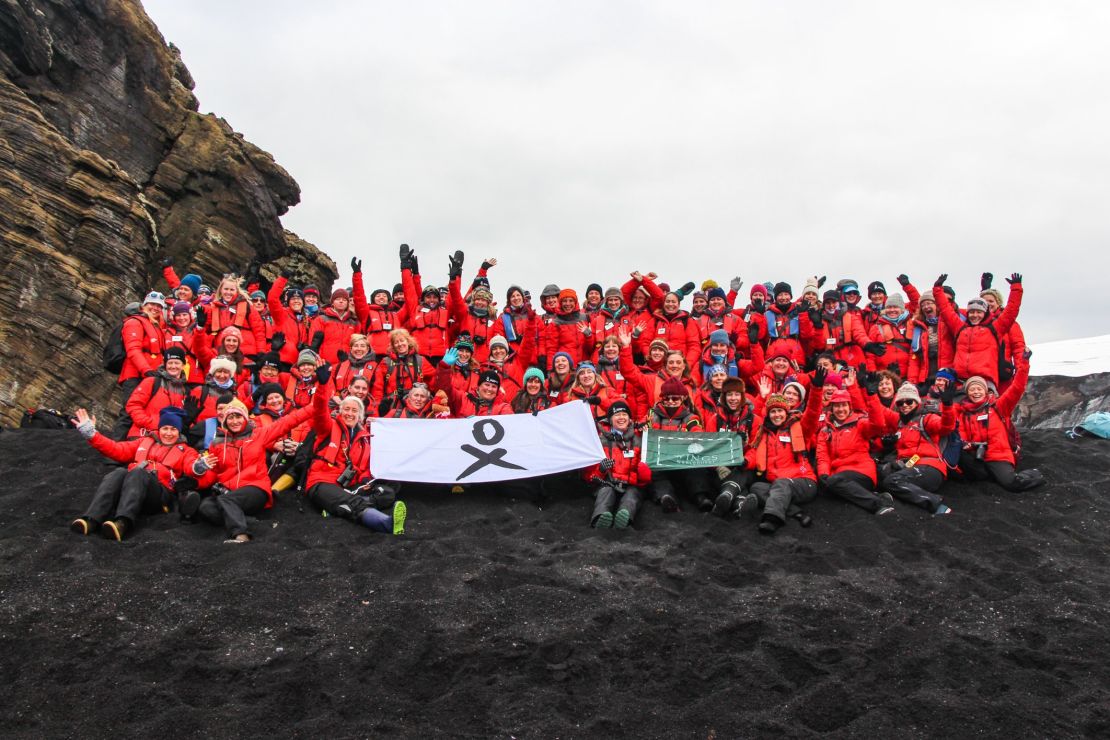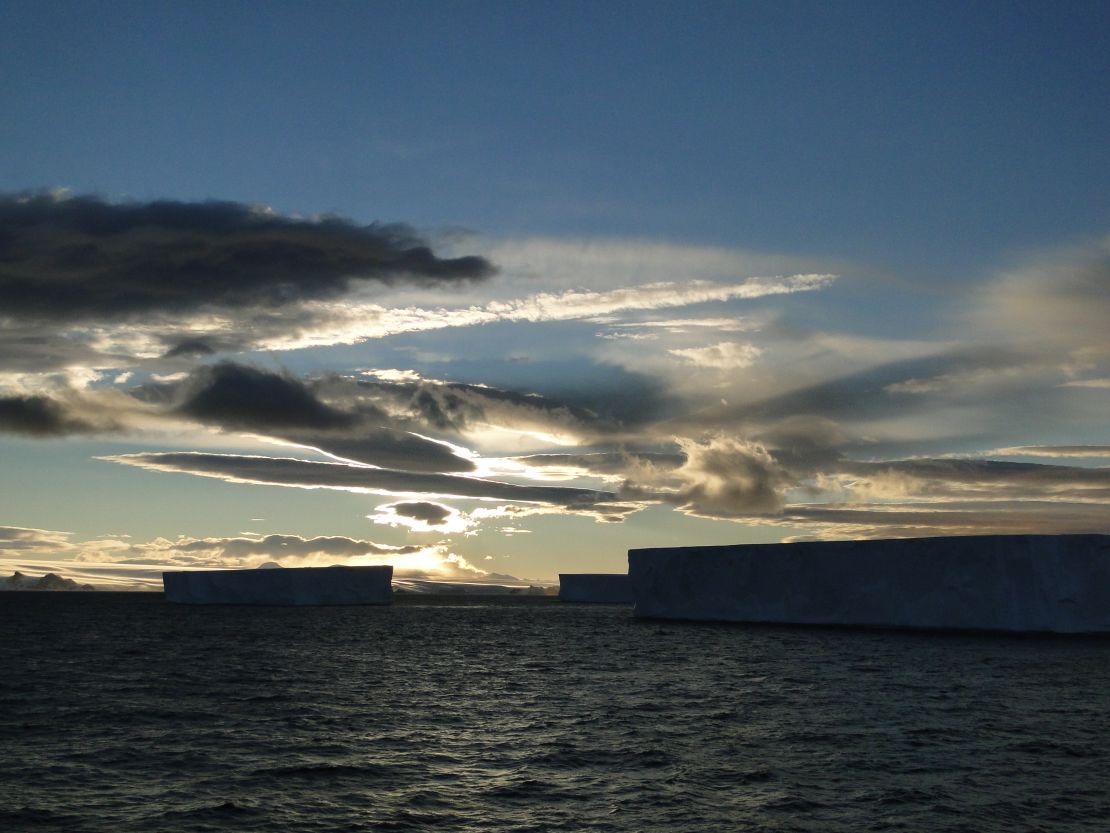There’s a running joke that one has to sport a beard to conduct scientific research in Antarctica.
Except it isn’t really a joke, because until the mid-20th century women were widely discouraged from exploring the continent, and the United States didn’t allow American women to work in the region until 1969.
But history was recently turned on its head when 76 women with backgrounds in science set sail to the bottom of the Earth.
The Homeward Bound 2016 expedition was the largest-ever female voyage to Antarctica.
The trip was not an adventurous holiday. Nor was it a chance to slide on the ice and play with the penguins. It was part of an ambitious 10-year mission to mold 1,000 women in science to lead, influence and contribute to policy and decision-making at the highest levels.
It was about the necessary role women have to play in protecting the planet.
“We just really can’t afford to have the voice of women missing at the leadership table,” Homeward Bound co-founder and ecosystem modeler, Jessica Melbourne-Thomas, 35, tells CNN.
“Women bring a diversity of approaches and a whole range of complimentary skills and styles in terms of science, and leadership more generally.”
Breaking ice in Antarctica
An idea is born
The idea began with Fabian Dattner.
In 2016, the Australian leadership activist decided she wanted to send a boatload of women to Antarctica, and invited her fellow Australian colleague, Melbourne-Thomas, to coordinate the science program for Homeward Bound 2016.

Before setting sail, participants underwent nearly a year of training to develop their leadership and strategic capabilities, and learn about the latest scientific research around environmental change.
In the lead-up to the voyage, Dattner and Melbourne-Thomas were struck by how eager the participants were to connect with the other women, and lead as a team, despite having never previously met one another.
“I think that’s a style that women gravitate to often – working collaboratively,” says Melbourne-Thomas.
Participant Deborah Pardo, 30 – a population modeler from France – also believes her gender influenced her perspective on the mission: says her interest in protecting the environment developed around the time she became a mother.
“You feel something inside you that makes you want to take care of people and the planet,” she explains. “Women have this drive to ensure the sustainability of the environment and the welfare of their families.”

That propensity is reflected in the tagline for Homeward Bound: “Mother Nature needs her daughters.”
Melbourne-Thomas, however, believes there is a more practical reason why women specifically should lead the world towards a more sustainable future.
“There is lots of evidence that it’s actually women and children who could stand to be most affected by climate change,” she says.
Indeed, in developing countries reports show natural disasters and extreme weather typically kill more women than men. Of the 150,000 people killed by the 1991 Bangladesh cyclone, for example, 90% were women.
Setting sail
On December 2, the 76 women from around the world set sail from Ushuaia, in Argentina, headed for the Southern Ocean, also known as the Antarctic Ocean.
In the subsequent two-and-a-half weeks, the team landed at numerous locations including the Argentinian and American research stations.

More from "Her"
“Antarctica represents the relative fragility of the natural world, but it is also an environment that can provide us with a lot of information about what’s happening on the global scale,” says Melbourne-Thomas, who chose to stay home with her infant during the voyage.
“Antarctica is an important system in terms of providing us with early warnings about climate change, but also a way to untangle the effect of multiple changes in the environment.”
In between exploring landmarks, natural features, animal colonies, and learning about the science behind and impact of climate change, the participants – ranging in professions from marine ecologists to doctors, physicists and astronomers – received intense strategic capability and leadership training.
“Landings were times to reflect on the training each day on the ship and connect with others and this beautiful content,” says Pardo.
She recalls how Antarctica’s vast white mountains of ice made her feel like she was hallucinating.
“You are completely blown away by the beauty and scale of things,” she says.
“You witness how Antarctica is the symbol of the human footprint on the planet and you want to protect it even more.”
Two of the most majestic moments for Pardo included walking on ice – which quite literally cracks beneath your feet – and a zodiac cruise between icebergs.
“We had no words to describe the beauty, scale, sounds, colors, shapes of the icebergs we saw and the ambiance we felt,” she says.

The number of women in white coats
Plans are now underway for a second all-female trip to Antarctica in February 2018.
In order to secure their place on-board hopeful participants need to submit a written application and short video pitch. Once selected, each participant is expected to raise approximately $15,000 to pay for their spot on the ship.
This time the organizers are seeking funding for scholarships to try to make the program more accessible to women from developing countries, adds Melbourne-Thomas.
The 10-year goal – starting with Homeward Bound 2016 – is to engage, encourage and support a diverse pool of women into leadership roles where they can shape policy and decision making.
The hope is to establish one great network of 1,000 women with backgrounds in science collaborating for a shared vision.
According to the UNESCO Science Report: towards 2030, women make up just 28% of the world’s research scientists, and Melbourne-Thomas says there is a high rate of attrition as women in science move from junior to senior positions.
“There’s evidence of a ‘leaky pipeline’ where women just drop out,” she explains.
However, with women accounting for 53% of of the world’s Bachelor’s and Master’s graduates in science and 43% in PhDs, globally, the groundwork is there for women to become much-needed leaders in the field of science.
“We are the role models for the next generation and we need to prove that by being in more leadership positions that we have a really important role to play,” says Pardo.
“Because you can’t really address environmental problems unless you solve social problems like the huge inequalities in the world.”





















